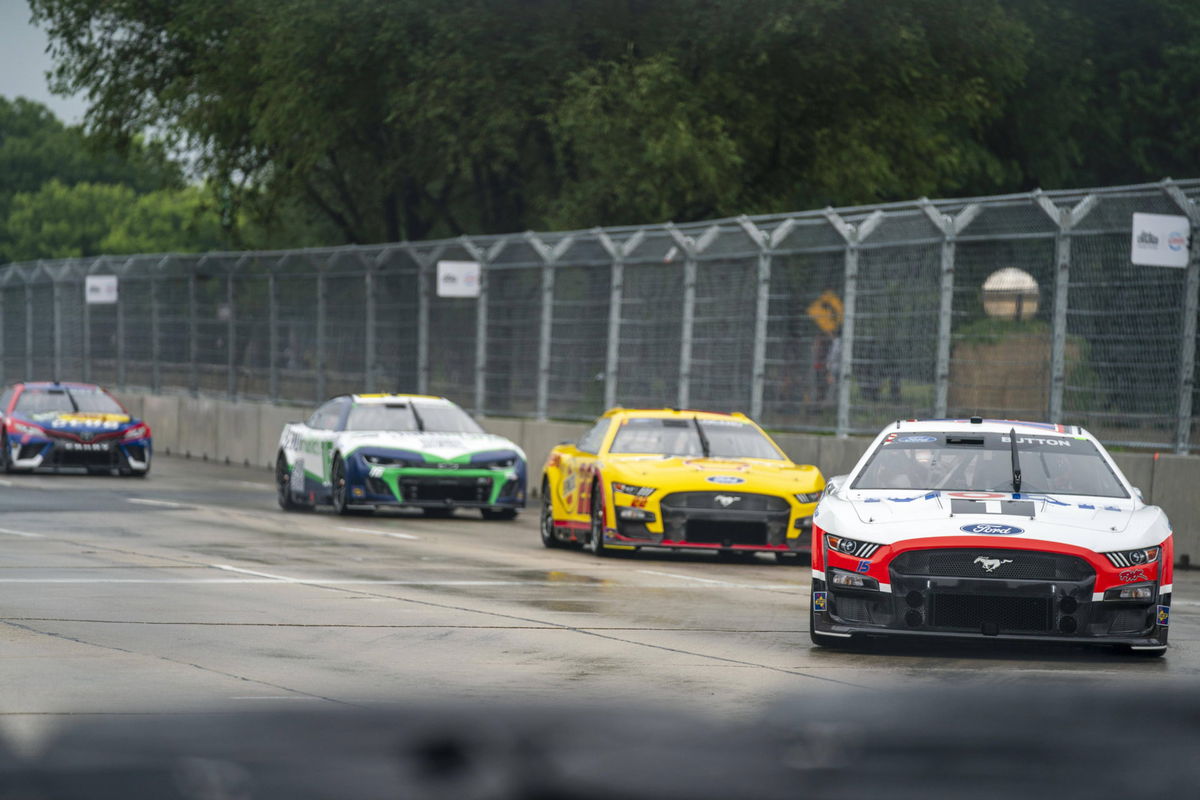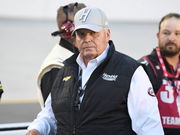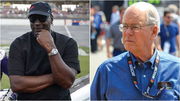
Imago
July 2, 2023, Chicago, Illinois, USA: NASCAR, Motorsport, USA Cup Driver, JENSON BUTTON 15 races for position through the city streets for the Inaugural Grant Park 220 on the Chicago Street Course. Chicago USA – ZUMAries 20230702_mda_a161_238 Copyright: xLoganxTxArcex

Imago
July 2, 2023, Chicago, Illinois, USA: NASCAR, Motorsport, USA Cup Driver, JENSON BUTTON 15 races for position through the city streets for the Inaugural Grant Park 220 on the Chicago Street Course. Chicago USA – ZUMAries 20230702_mda_a161_238 Copyright: xLoganxTxArcex
If anyone has earned the right to criticize the modern state of IndyCar racing, it’s A.J. Foyt. Seven-time national champion, four-time Indianapolis 500 winner, and a man who raced through pain, fire, and technology-free grit, Foyt’s legacy is the backbone of American motorsport. So when the 90-year-old sat down with fellow racing icon Tony Stewart to discuss the state of today’s IndyCar world, his verdict was as direct and hard-hitting as his driving style.
Watch What’s Trending Now!
Foyt’s words were blunt, but they come from a lifetime of experience. Whether it’s wrestling 1,200-horsepower roadsters on narrow tracks or roaring down the famed Brickyard, Foyt represents an era where the driver’s skill was the ultimate differentiator—not buttons and telemetry. But first, let’s take a moment to appreciate the man behind the sharp opinions, his career forged in sweat, speed, and a healthy disregard for limits.
ADVERTISEMENT
AJ Foyt isn’t on board with modern day racing
When asked by Stewart about how he views the current state of IndyCar racing, Foyt didn’t hold back. “Now all they do, you tell ’em, ‘Push button four. Push button five.’ Before, you did it manually,” he said. The idea of a race car that required buttons and electronic interference clearly doesn’t sit well with him. “I never thought I’d live long enough to say I couldn’t even start my own damn race car. You’ve [Tony] been in ’em a little bit, you know the difference,” Foyt pointed out, emphasizing how different the sport feels now. He even suggested that today’s generation of drivers should take a spin in the cars from his era. “I’d just like to see some of the [modern] drivers drive the cars from back then, them old roadsters.”
Foyt’s critique isn’t just about technology for technology’s sake—it’s rooted in a deep understanding of the driver-machine relationship. Back in his day, IndyCar machines were beasts of raw power and unpredictability. The roadsters of the 1960s, for instance, were front-engine leviathans with minimal aerodynamics and tires that required finesse to manage. The margin for error was razor-thin, and the outcome of a race depended almost entirely on the driver’s ability to master these unruly machines.
Comparing that to today’s cars is a stark contrast. Modern IndyCars boast around 700 horsepower, turbocharged 2.2-liter V6 engines, and advanced aerodynamics designed to maximize grip and minimize drag. Add in push-to-pass systems, intricate engine maps, and a steering wheel cluttered with buttons, and it’s clear how much has changed. For Foyt, though, the raw thrill of man versus machine has been diluted by technology’s increasing role.
ADVERTISEMENT

USA Today via Reuters
May 16, 2024; Indianapolis, IN, USA; Arrow McLaren/Rick Hendrick driver Kyle Larson (17) heads into turn one Thursday, May 16, 2024, at Indianapolis Motor Speedway during practice in preparation for the 108th running of the Indianapolis 500. Mandatory Credit: Mykal McEldowney-USA TODAY Sports
“I don’t know, I don’t think it’s good for racing myself but it’s still racing.” he conceded, acknowledging that while it may be diluted by his own standards, it’s still racing at the end of the day.
ADVERTISEMENT
While Foyt’s analysis of modern racing hits hard, it’s his memories of the Indianapolis 500 that truly illuminate his unparalleled career. His first win at the Indy 500 came in 1961, marking the 50th anniversary of the event and the final race run entirely on the original brick surface. Recalling the challenge of racing on the historic track, Foyt described it as a battle of endurance and precision. “It’d been like, you go down a paved road once, a hole pops up, then you hit them everywhere. They would really get slick halfway through the race,” he told Stewart.
Top Stories
New Charter Deal Triggers ‘Financial Frenzy’ as NASCAR Teams Set for Massive Payday

Rick Hendrick Strikes Fear in NASCAR Fans With Chevy’s New “Illegal” Car

NASCAR Broadcasters Asked to Issue an Apology to Michael Jordan & Co. After Lawsuit Settlement

What Settlement Agreement Have Michael Jordan & NASCAR Reached? Everything to Know From Evergreen Charters to Payout

Dale Jr. Goes on a Ballistic Rant Calling Out NASCAR’s Obsession With Manufacturing Drama

Foyt’s Indianapolis 500 triumphs: Bricks, fire, and sheer grit
That first win was the beginning of a storied relationship with the Brickyard. Over the years, Foyt would go on to claim four victories at Indy (1961, 1964, 1967, and 1977), becoming the first driver to achieve this feat. Each win had its own dramatic story, but the 1967 triumph stands out. Driving a Ford-powered Coyote, Foyt avoided a massive crash on the final lap, threading the needle between wreckage to cross the line and take the victory.
ADVERTISEMENT
The cars of that era were treacherous, with rudimentary safety measures and engines that demanded a level of mechanical sympathy unthinkable today. Foyt’s ability to endure—and thrive—under such conditions earned him legendary status. It wasn’t just his wins that defined him but also his resilience. From fiery crashes to staggering injuries, Foyt always returned, determined to prove that the driver was the most crucial component of any race car.
His Indy record is staggering: 35 consecutive starts, seven national championships, and five decades of top-ten finishes. Foyt’s legacy at the Brickyard remains unmatched, with his name etched in motorsport history. In every era of racing, there’s a voice that calls for the purity of the sport. A.J. Foyt is that voice today—a reminder that the soul of IndyCar lies not in the tech but in the driver’s ability to master the impossible.
ADVERTISEMENT
ADVERTISEMENT
ADVERTISEMENT
ADVERTISEMENT

